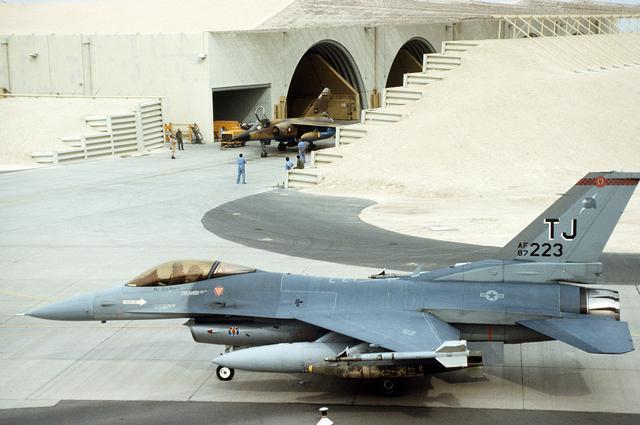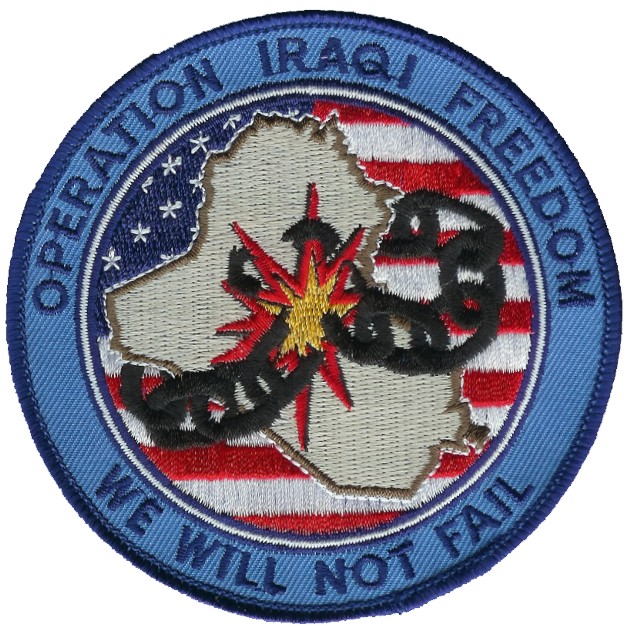Featured Articles
Canopy of F-16 downed during Desert Storm returns home
Introduction
During a combat mission in 1991, F-16C #87-0257 from the 614th Tactical Fighter Squadron 'Lucky Devils' was shot down over Iraq during Operation Desert Storm. Its canopy was discovered by American ground troops in 2003 during Operation Iraqi Freedom. Now, almost fourteen years later, the only remaining part of #87-0257 will find a last resting place at the Pima Air and Space museum in Arizona. The retrieval of 257's canopy is a remarkable story, told here by the eye witnesses.Aug 2nd, 1990: Iraq invades Kuwait
In the early hours of August 2nd, 1990, the Iraqi army invaded its neighbor Kuwait. Kuwaiti defenses were quickly overrun, and within hours of the invasion Iraq had assumed full control over the Emirate and its oil reserves.
Sgt. Mike Kopack describes what the impact of the invasion was on Torrejon AB in Spain, the 614th's home base:
Over the next few days, as the US Military started to deploy it all grew closer. Our transit aircraft line grew much more busy with C-141 Starlifter and C-5 Galaxy supply flights making stops on the way to the Mid East. As the traffic increased, at times it almost seemed to crowd our wing of F-16s off of the flightline.
The 401st Tactical Fighter Wing was the only flying wing assigned to the 16th Air Force, also based at Torrejon. Our commitment was to patrol and defend Southern Europe and the Mediterranean region from our base in Spain, and our deployment locations at Aviano AB, Italy and Incirlik AB, Turkey.
With Incirlik's location close to Iraq it seemed like a good bet that we would end up in Turkey before very long. Of course the rumors were flying - how many aircraft would deploy? Where? When? The only thing that I knew for sure was that there was a huge amount of MAC traffic through our little airbase and even I was driving a 'Follow Me' truck to help our Transit Alert guys (Umm, guys, you know I don't have a military license? -- Well, just don't hit anything...)"
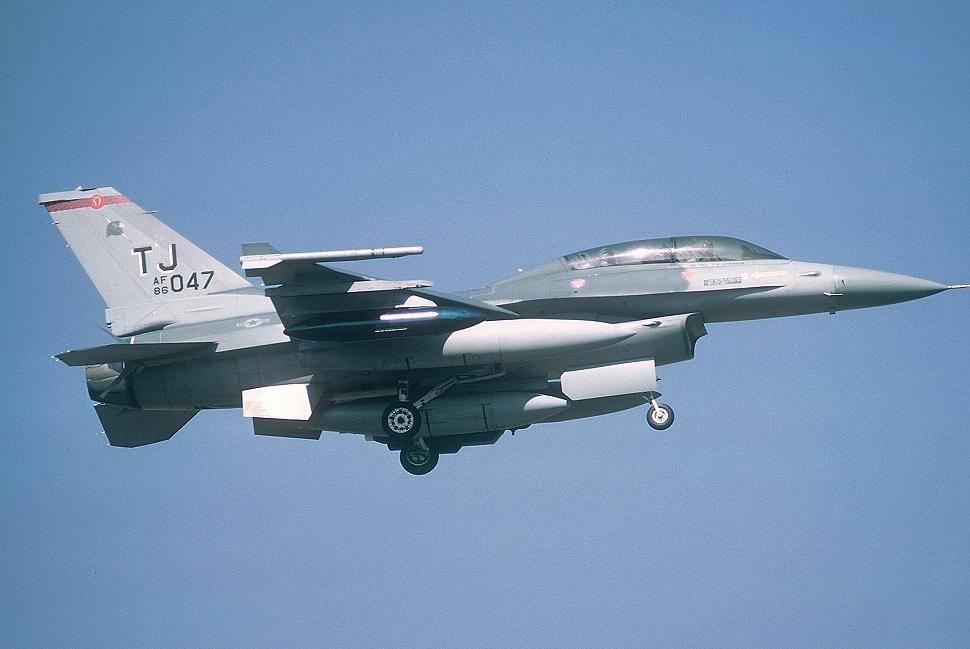
The 614th Tactical Fighter Squadron goes to war
Four weeks later, on August 28th, the 614th TFS received orders to deploy to Qatar. Mike Kopack:
"My 'real job' at Torrejon was as an F-16 mechanic, I worked in Hangar 5, the 401EMS Phased Maintenance hangar, on the 613th TFS 'The Squids' F-16C/D aircraft. Every 150 flying hours we would open each aircraft up and do a pretty intensive inspection, correct the faults we had found, and perform scheduled maintenance. Not the 'glamour' job of working on the flightline (I know, I hated going to phase when I was flightline at MacDill AFB) but it was usually more 'in-depth' than line work. Also it was nice to be inside, out of the Spanish summer sun and the winter's cold.
At the time we were on 12 hour shifts even though phase work had been pretty relaxed since the airlift had started, fewer aircraft had been flying, so there were fewer aircraft to inspect.
It was around midnight on August 28th that we received some of the first answers to all of the rumors. The telephone rang in the inspection dock and the 614TFS 'Lucky Devils' recall was on."
"At most stateside bases a recall is basically a telephone excercise. At Torrejon, where telephones are very expensive and still rather rare, it is a door-to-door driving exercise. Our supervisor started the fun, "OK, who has a car?" Everyone that lived off base was required to have directions and a map to their apartment 'on file' in our office. At this point, seeing some of the maps, it became obvious why some of us became mechanics and not artists. I had a car, and was handed a map.
I had deployed to Aviano the previous spring with the 614th and knew the phase mechanics well. As I set out for Alcala, about 5 miles down the N2 highway, that night with my map I knew that the mechanic I was informing wouldn't take the deployment as good news. His wife was eight months pregnant with their first child. By the time I returned from 'my mission' the word was spreading that the Lucky Devils were deploying to Qatar. Now I've always been pretty good at geography, and am kind of a 'news junkie', but I'll admit, I'd never heard of Qatar.
I asked about the mechanic that I'd informed and his pregnant wife. Being single (and with no real plans for that weekend) I volunteered to go in his place, but was told that he would deploy with his unit and would not return until his unit returned. It was several hours later that we sent out search parties for some of the people trying to follow hand drawn maps around central Spain. By the time I returned to work that night (29 August 1990) the Lucky Devils were gone, with their 24 F-16's and their equipment and personnel in 3 KC-10 Extender refueling aircraft."
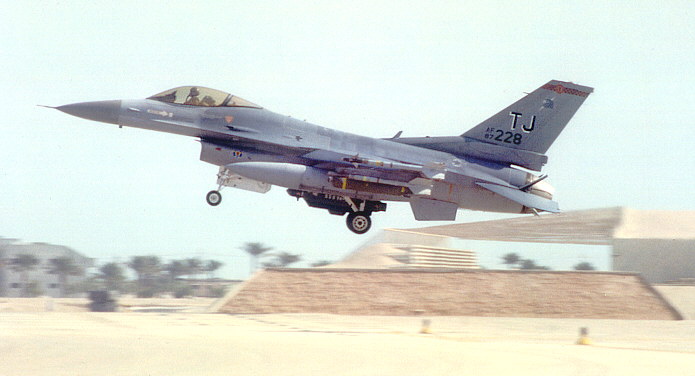
January 16th, 1991: Start of Operation Desert Storm
"As I report to you, air attacks are under way against military targets in Iraq...I've told the American people before that this will not be another Vietnam. And I repeat this here tonight. Our troops will have the best possible support in the entire world, and they will not be asked to fight with one hand tied behind their back."
President George Bush~ Address to the nation ~ January 16, 1991
January 19, 1991: First mass day-light raid on Baghdad
The morning started off well enough with the war going better then was expected. It was decided that a mass Vietnam-style day-light raid would be flown over Baghdad. This raid had little tactical advantage, but was intended as a show of force. A package of 64 aircraft was put together for what would be the first day-light raid over Iraq. The 614th launched a total of twelve F-16 to participate in the raid, and they were to be the last squadron in the package to fly over Baghdad - the "Tail end Charlie" slot.
It was a busy day for the F-4G Wild Weasel flying SEAD missions that day, as by the time the 614th TFS aircraft entered the target area, all the HARMs had been spent. The 614th's flight lead, who was from the 416th TFS, decided to go into Baghdad any way.
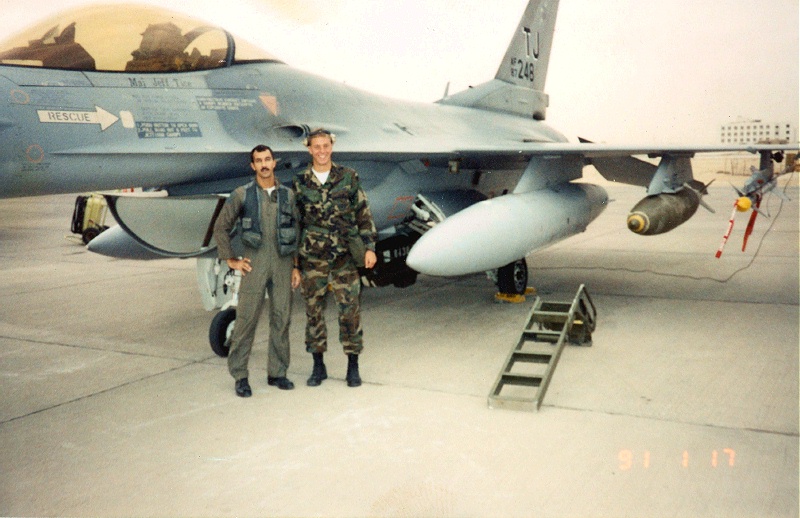
Aircraft down
The day was to quickly turn bad for the 614th TFS as they would lose two aircraft.
The first 614th TFS aircraft lost this day was piloted by Captain Harry 'Mike' Roberts who was in 'Lucky Devil' aircraft #87-0228 when it was struck by a SAM.
Then Major Jeffrey 'Tico' Tice witnessed the whole thing:
I saw the missile launched at Captain Mike Roberts jet and called for him to "break right." Missile went trough his jet and all I saw was his jet vaporize. Though he was dead for nearly a week.
Scott Snell also describes the loss of this aircraft:
"Aircraft #87-0228 was also shot down on January 19th, 1991. Then Captain Mike Roberts was flying 228 and took a direct hit on the underside of the F-16. The other pilots came back and said that the F-16 was split in half, the cockpit pitched down and that they didn't see any parachute. We all thought that he was killed until we see both Tice and Roberts paraded in front of the CNN camera as prisoners of war."
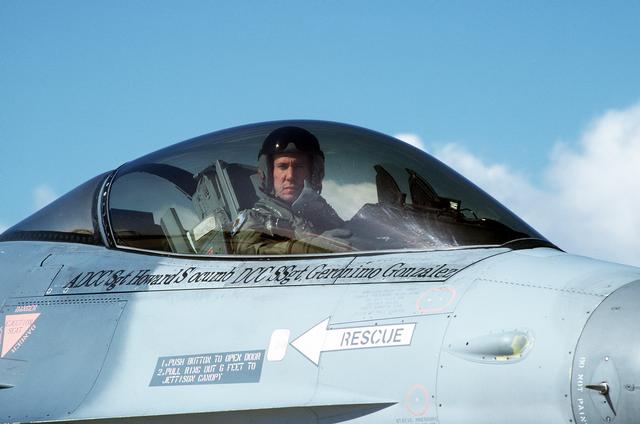
Second aircraft to be lost was F-16C #87-0257, piloted by Major Jeffrey Scott "Tico" Tice from the 614th TFS after being hit by a SAM 150 miles into Iraq. TSgt Bill Hinchey was the dedicated crew chief for #87-0257, describes his F-16: "I was the dedicated crew chief of aircraft #87-0257 while assigned to the 614th Aircraft Maintenance Unit, Torrejon AB, Spain. The aircraft deployed to Doha, Qatar in support of Operation Desert Shield/Storm. It was an awesome flying machine. It flew over 30 consecutive flights Code 1(no defects) during the initial days of Desert Storm!" Scott Snell describes how he launched Major Tice in #86-0257 that fateful day: "Major Tice was suppose to fly #86-0288 but refused to as 288 had one less chaff/flare canister (some Falcons had an extra chaff/flare canister added and 257 was one of them). 257 was a spare and he came over (288 was parked right next to me). I had to clean the cockpit area up as there was some sand in it from the other jets taxiing. I then followed Maj. Tice around 257, he had a habit of spitting into the exhaust area and didn't this time as he was in a hurry (this caused a few minor arguments as some crew chiefs said that he did... he didn't as I stood right beside him as he looked in the exhaust area). I then buckled him in the cockpit and launched him out. I always tell the pilot that I will see him when he comes back, have a good flight and shake his hands but didn't this time (I always tell the pilot that I will see him twice before I launch him out now... once before I climb down from the ladder and once just before I unhook the comm cord to launch him out)." Major Jeffrey 'Tico' Tice: Did NOT spit in exhaust of #87-0257. Did not have time for "proper" walk around after ground abort of #87-0248 for radio failure. Description of what happened by Major Jeffrey 'Tico' Tice: During the fifth or sixth missile avoidance maneuver, my RWR lit up with the first SAM guidance signal locked on me. At this point Tico's aircraft was hit by the SAM. Forced to eject over enemy territory he thought things would still be okay. On January 20th, 1991 the Pentagon announced that major Jeffrey Scott Tice was missing from an offensive strike over Iraq but no further information was given. Later on the 20th of January a video aired on Iraqi television interviewing Allied POW's including Jeffrey Tice and Mike Roberts along with five other POW's. This video appeared on CNN and another on January 22nd, 1991. By that time both Jeffrey and Mike were identified by their relatives. Although abused and stressed they were alive which was a relief to their family and the 614th TFS.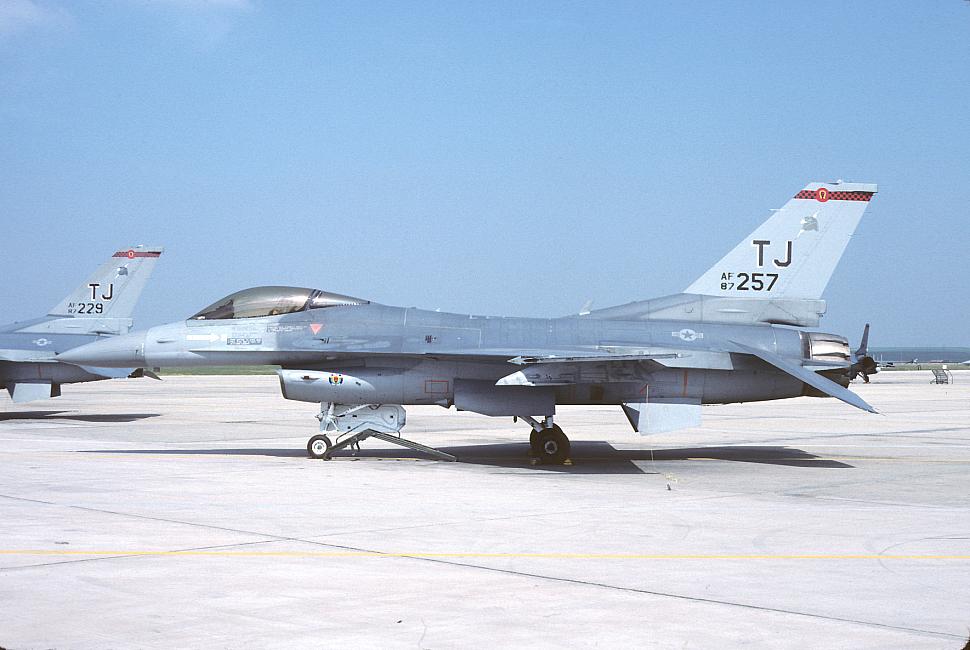
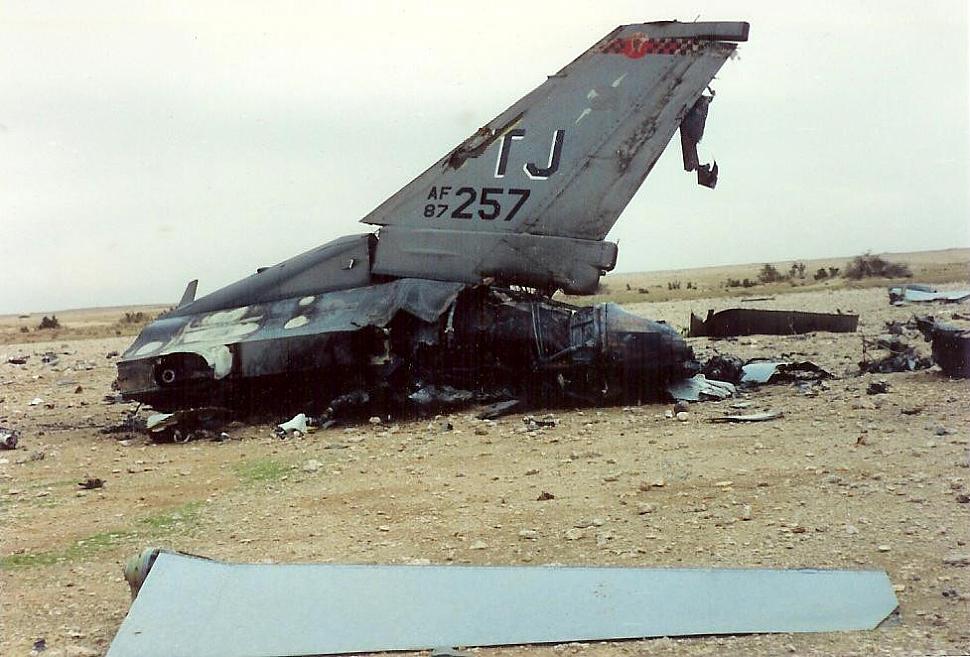
Returned to friendly territory in Riyadyh, Saudi Arabia and then was sent to Bahrain for a hospital stay. Returned to the United States for recovery at Malcom Grow Medical Center in Washington DC. Returned to Torrejon AB, Spain in April 1991 and was back flying by tax day the same year.
2003: Operation Iraqi Freedom
The canopy of aircraft #87-0257 was found in April of 2003 near Iskandaria, Iraq by the 2-70 Armor from Fort Riley Kansas while attached to the 101st Airborne. It should be noted that the 187th Infantry also claims that they found the canopy. When the canopy was found it was on display in Al Hallah football stadium as an Iraqi war trophy amongst other war trophies. From the arena it went to Baghdad where it was turned over to an Enlisted Terminal Attack Controller who took it to Baghdad International Airport when they were consolidated back under Air Force control (ETAC). The ETAC is responsible for ensuring that a pilot identifies and attacks correct targets.
An A-10 pilot, call sign 'Balls' was on the ground during the campaign to provide close air support advice for the Battalion Commander and lead a small group of Tactical Air Control Party (TACP), air force troops also attached to the unit. Balls later went on to fly 20 combat missions over Iraq and his experience on the ground helped, but explains his story of the recovery of the canopy:
"During Operation Iraqi Freedom I was tapped as a "BALO" (Battalion Air Liaison Officer) for the 1st of the 187th Infantry of the 101st AD. I was greeted by a company commander on our first day of invading Al Hallah saying they had found a canopy, and it had English on it. I went with him to the Football stadium and recognized the canopy immediately as a Viper's. Also, I knew that (as far as I knew) a Viper had not been shot down in by this stage of the operation, and that the canopy looked aged so I knew it must had been from Desert Storm. While we were so tight on vehicle space our battalion was "borrowing" trucks from the Iraqis, I could not find a way for us to take it with us. But I was able to ensure that an aviation unit was able to take care of it and try to get it back to the states."
Chief Warrant Officer Two (CW2) Scott Hyde with B Company 8-101st Aviation Regiment was in Iraq in June 2003 for two months describes bringing the canopy home:
"The canopy was brought to my (stateside) neighbor by a unit that found it in a stadium near Iskandaria. They had heard that the 101st had an Air Force Weather Detachment assigned to them at the air base we were occupying at the time so they brought it over. The Weather Detachment later abandoned it due to lack of ability to transport the canopy so B Company 8-101st took possession. B Company 8-101st Aviation Battalion moved to Mosul on May 5th, 2003. The canopy was transported on the back of a "water buffalo." The canopy was covered in order to conceal it from view so not to incite a possible reaction from the Iraqis while traveling to Mosul.
A soldier from the 187th Infantry (under the 101st) stopped by my house today and told me that his unit had found the canopy in Hallah Stadium and he always wondered what happened to it and was surprised to see it here so he stopped to ask about it. He told me that the stadium was full of war trophies as well as munitions that they destroyed. He did say that they were there for such a short period of time that he did not have time to get a lot of details about the place or examine all of the contents.
Anyway, when Rob, my neighbor here at Fort Campbell, was given the canopy, his wing commander told him to bring it home. Since he and three fellow Airmen were living and working out of a HMMWV, the canopy was not a priority. I bumped into him on the way to the restrooms (or rather 'tubes') (you laugh, I'm serious!) and asked him about the canopy and he said if I wanted it to take it. Neither of us thought we could get it back but it was worth a try.
Well, we dragged the thing all over Iraq with us. When it came time to get her back, we slid it into the bottom of an ISU-90 and brought it home. Customs seemed to enjoy the story of the canopy and did not give us a hard time about it.
I contacted a friend that is an OSI agent and he helped me find Capt. (now Maj.) Kenneth 'Railer' Rossen
My intent is to take it to Arizona this summer and link up with Jeff Tice and Kenneth and pass the canopy over to the Pima Air and Space Museum in Tuscan. While I have been encouraged to give it to the 101st Airborne Museum, I know it will never be displayed. I think they will at Pima. It is a piece of history and deserves to be seen."
Few people could have imagined the journey of this simple canopy. Surviving a crash in one piece from over 10,000 feet onto the Iraqi desert in 1991, then becoming a war trophy for Iraq before being liberated by coalition forces in 2004. In the end, it is hoped to get the canopy into a museum, and most importantly on display. The canopy has become more then just a piece of aircraft wreckage. It has brought together people in both conflicts in the attempt to contact all involved. Ironically what was a war trophy for Iraq has become a war trophy for the Americans.
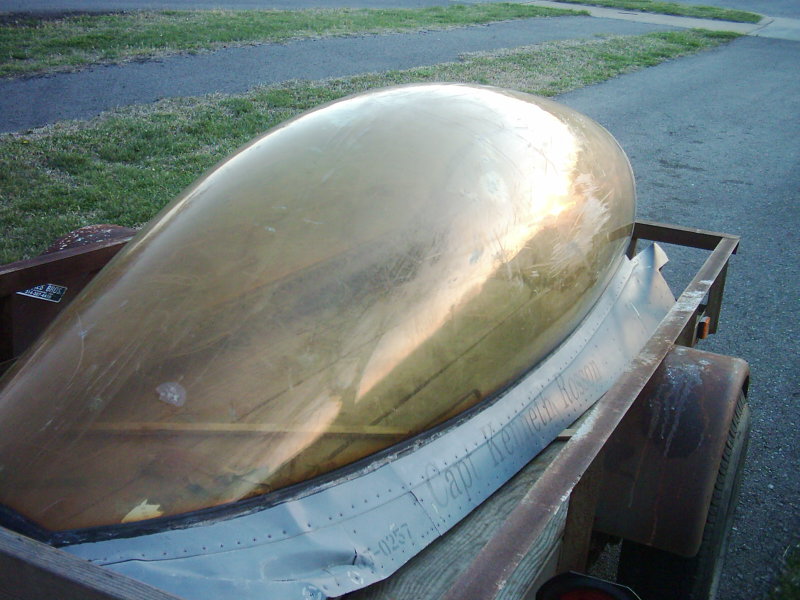
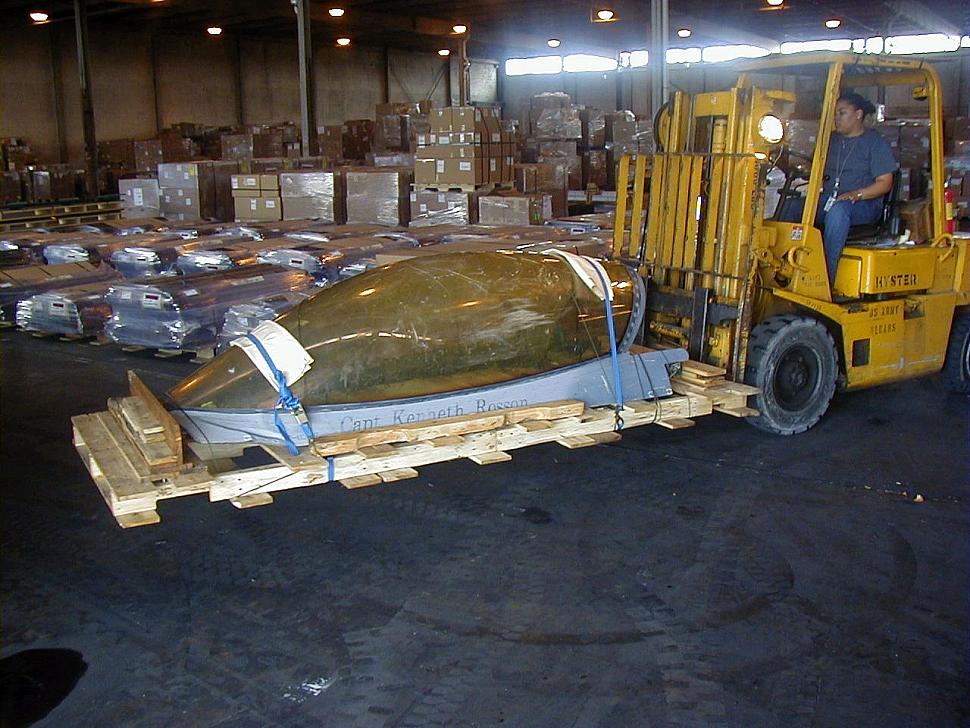
As of May 2005 the canopy has found a home on display at the Pima Air & Space Museum, Arizona. Specifically in hangar 3 were nose art is on display. People passing by the canopy may just see the canopy for what it is. Hopefully they will stop and read the amazing journey behind this canopy and how it tied the two wars in Iraq together. Jeffrey Tice who was able to see the canopy on display at the museum describes what it was like to see the canopy again after so many years:
Last time I saw it, it was falling away from me at about 20,000 feet. Was a bit disturbing to see it once again. Made me "flashback" to Jan 1991 for a brief moment. Still gives me goose bumps just to look at it again. After a fall of 20,000+ feet it looks pretty damn good!
When asked what Jeffrey wants people to think about when people view the canopy at the museum:
There are people intimately associated with the machinery of war and those people (not just me!) should be remembered with the same reverence we give the aircraft displays in the museum.
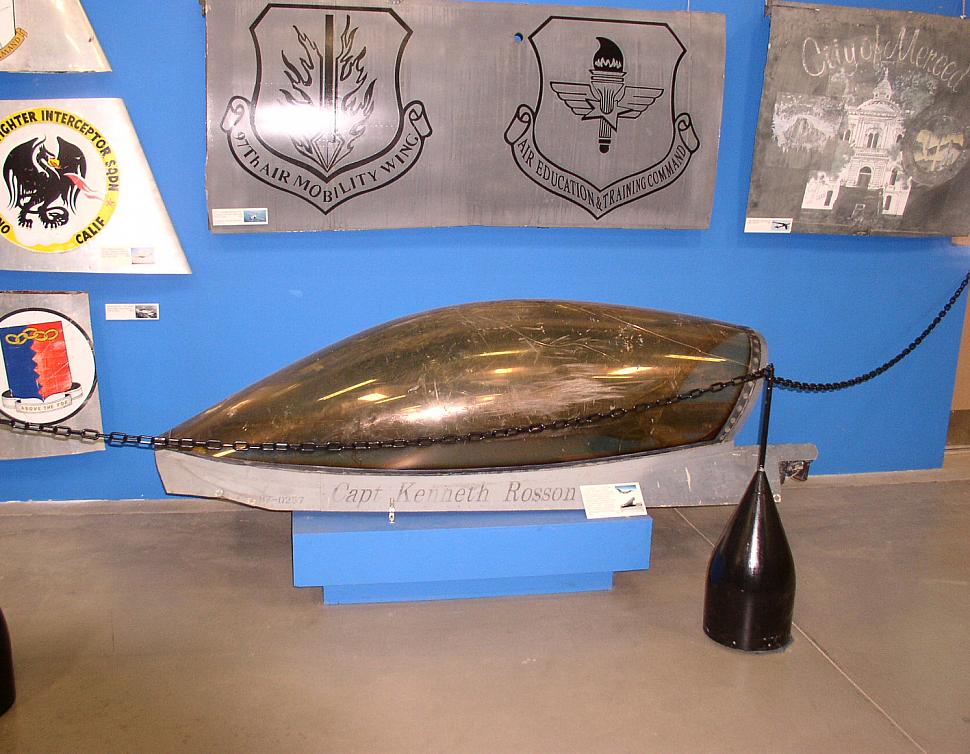
Special thanks
- Scott Hyde
- Jeffery 'Tico' Tice
- Scott Snell
- Mike Kopack
- Mick Bretz
- Scott Stutler
- Kevin Belanger
- James Stemm from the Pima Air & Space Museum
Tice actually was hit by a fulcrum. He went down 250 miles into the desert where no Sam existed. Air force hid the air to air loss. Had it been a SA-2 hit the aircraft would be vaporized.
Hornets, a6, and a b52 were lost over water in suspect circumstances also.
Please use this form to add any list any error or omissions you find in the above text.
Note: your comments will be displayed immediately on this page. If you wish to send a private comment to the webmasters, please use the Contact Us link.


